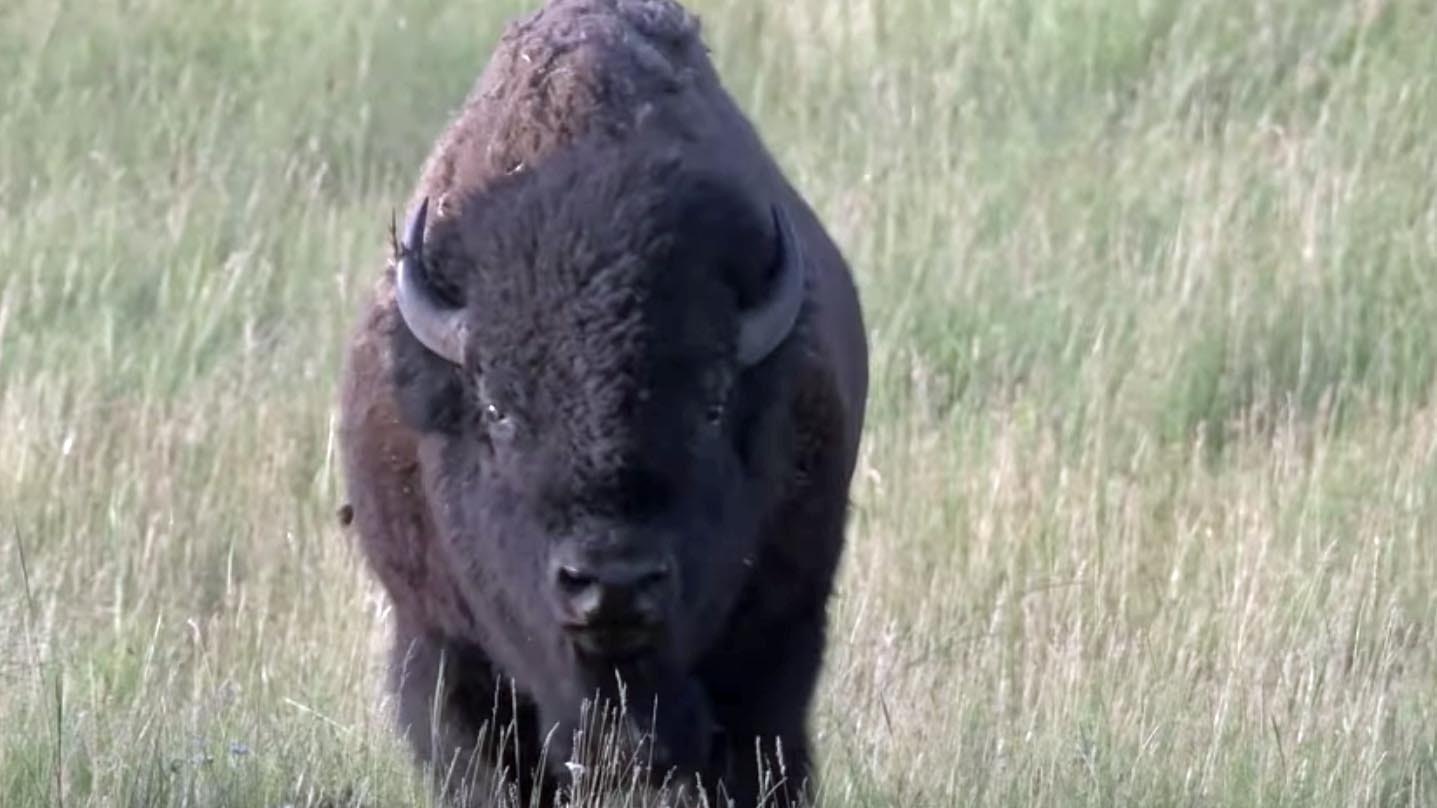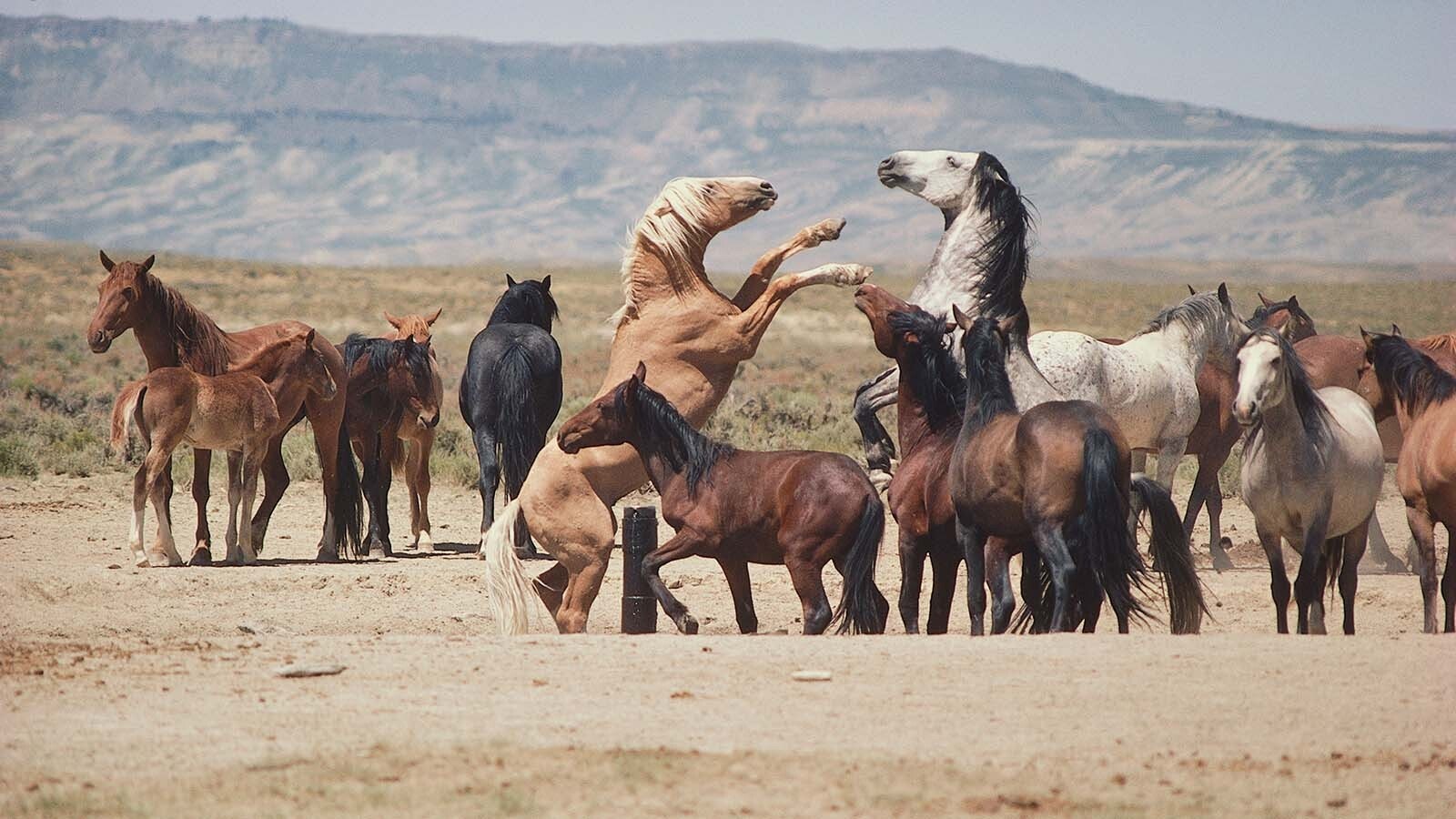By Mark Davis, Powell Tribune
Bison are currently gathering in the Hayden and Lamar Valleys, moving into massive aggregations of hundreds, if not thousands, of the iconic animals of Yellowstone National Park.
Massive bulls, some as large as 2,500 pounds, are fighting for the chance to breed. Challenges begin with bellows, as other bulls enter their territory. If the challenger replies, the bulls will begin to plow the ground, throw their huge frames on the ground and wallow, attempting to dust up.
From a distance, the clouds of dust look like the smoke from dozens of small fires, catching the sunlight in hues of yellow. What comes next is one of the most amazing displays of raw power in the park. The bulls move close — head to head — and unless one is willing to back down, the fight is on.
“It will culminate then in essentially a fight to the death as they butt each other’s heads. Many bison are killed there,” said Chris Geremia, Yellowstone’s top bison biologist. “There’s really nowhere else in the world to see a breeding season like this with thousands of bison breeding.”
Less than two centuries ago, there were as many as 30 to 60 million bison moving across the plains.
Though there are far fewer now, the middle of a bison rut is still one of the most dangerous places to be in the park. The fighting can happen anywhere, including on the road through Yellowstone’s famous valleys.
Still, visitors will clog pullouts and roadways during late July and the first three weeks in August — some of the busiest weeks in the park — hoping for a chance to see the spectacle.
Every year bison injure visitors, goring them or tossing them aside like rag dolls.
“Give them some space, let them do their thing,” Geremia said. “Even if you’re doing the right thing, there’s a really good chance that those bison will move in your direction. We encourage people to get in their vehicles and move away… Try and get to the next safest spot to observe.”
Yellowstone doesn’t keep track of property damage and injuries caused by bison. Most injuries happen when visitors, underestimating the speed and aggressive nature of the massive creatures, get too close.
Bison can run at 35 mph and jump 5 feet in the air. Humans are no match for their athleticism. Every year the species cause property damage and injuries, Geremia said, so “use your best judgement.”
On Wednesday, the Park Service posted a video of one bison sending a rival partially airborne during a fight on a park road.
Geremia is currently working on research projects, including the effects of thousands of bison on the park’s flora.
The herd, estimated at approximately 5,000 individuals, is constantly on the move and constantly feeding. Bison migrate over 70 miles each year, Geremia said, and they walk more than 1,000 miles while searching for food during the year. Wolves and grizzly bears keep them moving, just like in pre-colonial times.
“We’ve realized that, as the bison population has gotten larger over the last decade, it’s changed the entire way that plants grow in the park,” Geremia said “So much so that it affects how spring green-up occurs across the park and how the plants ground down when it dries out in summertime.”
The effects of the herds on plants is so dramatic, you can see a distinct difference in the way the park greens up in spring from space, he said. “It was really stunning to me … just because we’ve got wild bison roaming across the spaces.”
Geremia is also testing genetics of the population and how it varies between these breeding areas.
The PhD started as a field technician in 2002, collecting fecal samples and studying brucellosis in the population. He later became the program biologist and then was promoted to the bison team leader in 2018.
“Bison make this ecosystem intact again,” Geremia said. “And the recovery of large predators and large herbivores is essential to making Yellowstone a full ecosystem, where you’ve got top predators and giant herbivores influencing what the land looks like.”
“Park visitors get the benefit and get to see this interaction happening,” he added. “There’s nowhere else in North America where you can see what you can see here.”
As Yellowstone’s bison population has grown, park managers have taken actions to reduce the size of herd, culling hundreds of animals on an annual basis. Some have been transferred to Native American tribes.
This month, the InterTribal Buffalo Council will transfer 40 former Yellowstone bison to 16 tribes in nine states.
These transfers will help develop and sustain tribally-managed herds while preserving the unique genetics and lineage of the largest and continuously free-roaming herd.
The transfers are a victory of Native American tribes and represents the culmination of nearly 30 years of advocacy by the council on behalf of its member tribes, said council president Ervin Carlson.
Many Native American Tribes have been working to restore buffalo across the U.S., where they now number in the tens of thousands.
Bison managed by Yellowstone National Park have never been interbred with cattle and will be used to help increase the long-term health of many populations across tribal lands.
The fight to protect Yellowstone bison is significant to many Native Americans, who disagree with management strategies which have led to the slaughter an estimated more than 10,000 since the early 1990s, according to the council.
The Choctaw Nation and Fort Belknap Tribes provided land and resources to support the development of bison quarantine facilities in 2018.
The facility was built by the Fort Peck Tribes, funded in part by the council, and was approved for use in post-quarantine assurance testing by the State of Montana.
Since then, the council says, quarantine operations have saved over 200 bison from slaughter.





